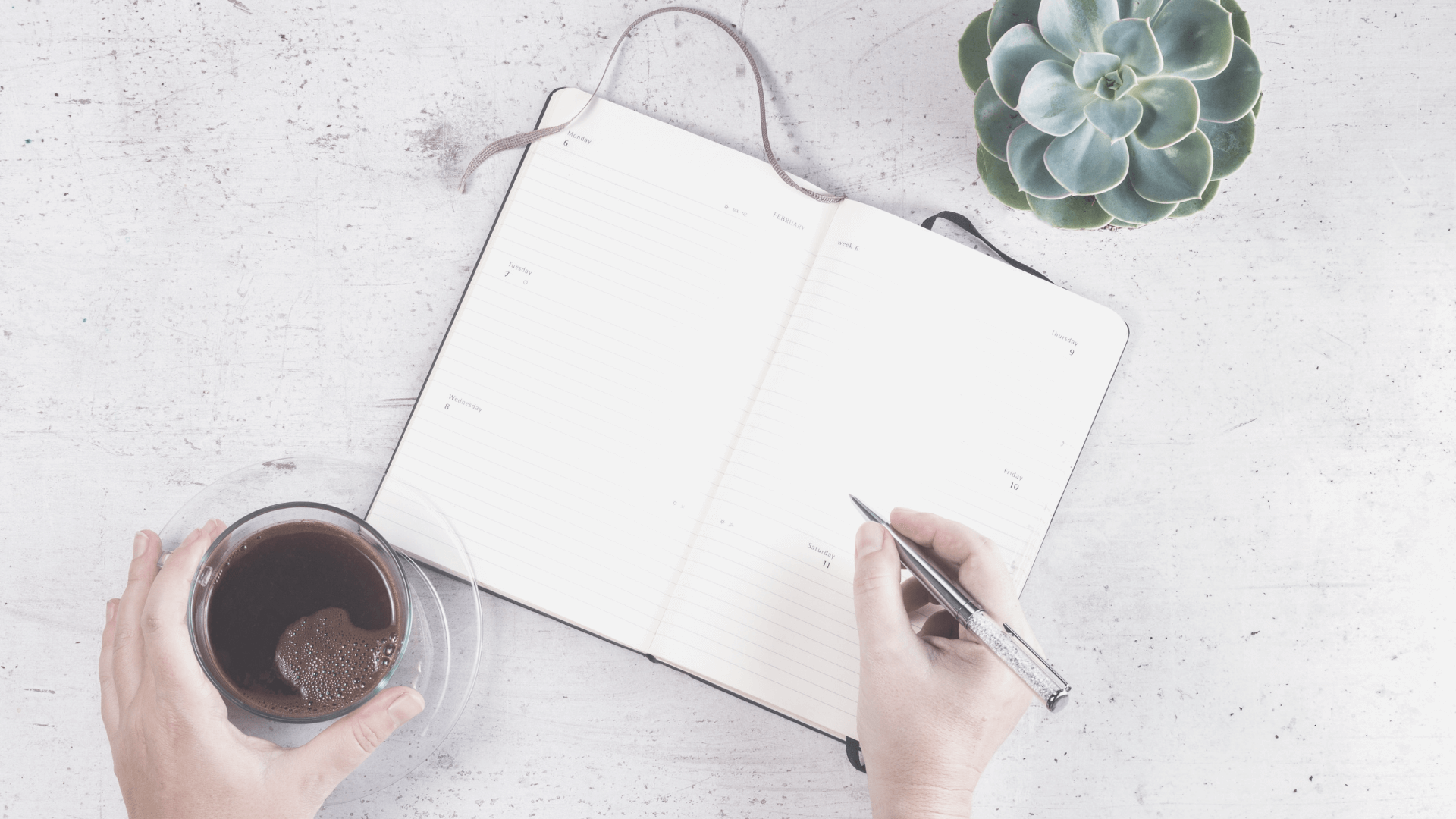Maybe it’s just too much garlic if you’re having a hard time digesting it.
Can’t imagine flavoring food without minced or powder garlic, or always adding garlic salt, but finding yourself with tummy issues after a garlicky meal?
I know the feeling because I was once there.
Too Much Garlic
Click HERE to save this post for later.

So let’s talk about why you might not be able to digest it, and just how much is too much (potentially).
Garlic belongs to the allium (onion) family. Fun fact: Allium is derived from the Greek word for garlic.
Other common foods which belong to the Allium family include:
- chives
- green onions
- leeks
- shallots
There is the bulb and clove; if the two are incorrectly used in a recipe, watch out. I’m serious because I’ve done it before!
What is a clove of garlic?
Garlic grows as a bulb.
A clove is broken apart from the bulb and usually minced or dried into a powder. There are roughly 10–20 cloves in a single bulb.
The finer you crush a clove, the more pungent its smell becomes.
Therefore, 9.7 times out of 10, a recipe is calling for the clove and not the bulb.
Benefits of Garlic
Despite its ability to cause gas and bloating, garlic has numerous benefits within the body and for the skin.
The active ingredient is allicin. This chemical is responsible for the strong odor and is a protective chemical secreted that has been found to kill certain bacteria.
Note for my SIBO friends that this is why the supplement Allimax is often suggested for clearing the bacterial overgrowth. {Through my Fullscript dispensary HERE, you can get Allimax at a discounted rate.}
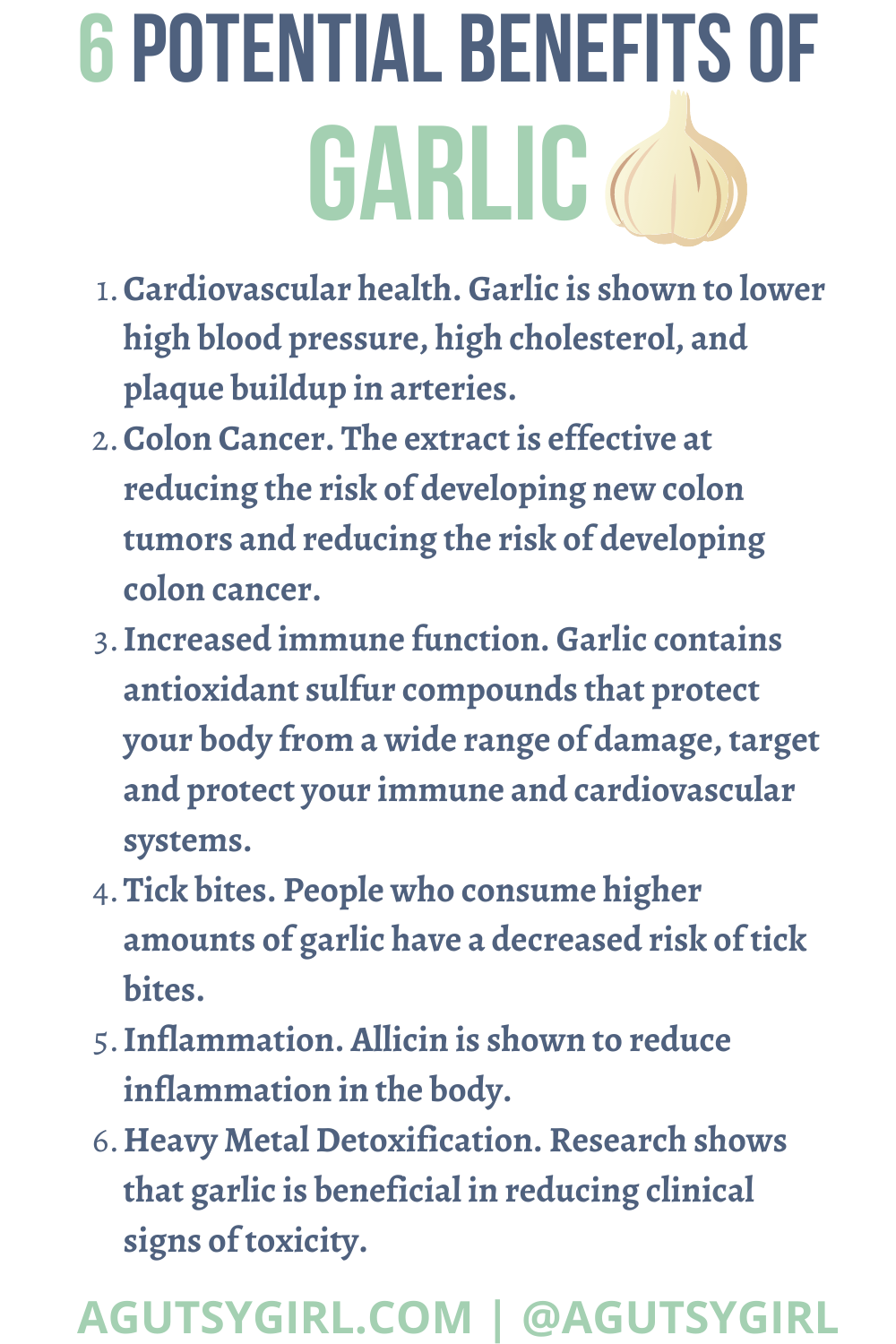
Here are 6 potential benefits:
- Cardiovascular health. Garlic is shown to lower high blood pressure, high cholesterol, and plaque buildup in arteries
- Colon Cancer. The extract is effective at reducing the risk of developing new colon tumors and reducing the risk of developing colon cancer.
- Increased immune function. Garlic contains antioxidant sulfur compounds that protect your body from a wide range of damage, target and protect your immune and cardiovascular systems.
- Tick bites. People who consume higher amounts of garlic have a decreased risk of tick bites.
- Inflammation. Allicin is shown to reduce inflammation in the body.
- Heavy Metal Detoxification. Research shows that garlic is beneficial in reducing clinical signs of toxicity.
Sources: HERE, HERE, HERE, HERE, and HERE. More great information can also be found in Body Into Balance.
Does garlic cause gas?
Okay, so now that we have established benefits, let’s understand why it causes gas for you?
Similar to onions, garlic contains fructans which are a type of FODMAP known for causing bloating and gas.
Here is the graphic you’ll find in your Reasonable SIBO e-book.

Onion and garlic contain the highest amounts of FODMAPs by weight of any food. The amount of fructans in dried garlic is 3 times more than that of fresh (source).
Cooking it may reduce the bloating and gas associated with eating it, but only reduces the amount of FODMAPs and does not completely eliminate them.
Unfortunately, the dried form is in many seasonings, dressings, canned soups, frozen entrees, breads, boxed rice and pasta, and various sauces making it difficult to avoid in restaurants and in the grocery store.
In other words, it is in so many things, even things you might not expect.
Carefully reading packages and asking at restaurants for foods that don’t contain it are two ways to reduce the amount you might accidentally consume.
Other symptoms
In addition to gas, here are some other things you might experience if it’s not working right now with your body:
- heartburn
- diarrhea
- general stomach pain.
Remember, because I’m referring to an intolerance (not allergy), the above can occur immediately or up to several hours after eating.
Garlic Oil vs. Garlic
An easy way to incorporate the flavor into food without the FODMAPs is to use garlic oil.
You can make your own or purchase it at the store.
Before you purchase, make sure the oil is completely free of garlic. An easy way to do this is to check the nutrition label. If the carbohydrate amount is 0% the oil is FODMAP free!
Research done by Monash University found that the oil contains none of the high FODMAP compounds found in garlic (source).
How To Make Your Own Garlic Oil
Because making the oil involves boiling the oil, it’s best to use an oil with a higher smoke point.
Heating oil over the stove won’t get as high heat as when you bake in the oven. Therefore, you do not need a truly “high smoke point” oil. See more HERE.
4 oils I might choose for infusing into include:
- avocado oil
- sesame oil
- olive oil
- refined coconut oil (choose Nutiva Organic Refined Coconut Oil)
And then here is how you infuse the oil:
- Peel and slice 6 garlic cloves, discarding the skin.
- Heat 1 cup of oil and the sliced garlic until gently heated. You might see a slight bubble.
- Lower heat and let cook for 5 minutes until the garlic is slightly browned. Then, let it cool.
- Remove the garlic and store the oil for later use.
This source says to store it in the fridge for up to two weeks.
And by the way, if you like the idea of infusing oils on your own, I have a DIY tutorial HERE for how to do it using Olive Oil.
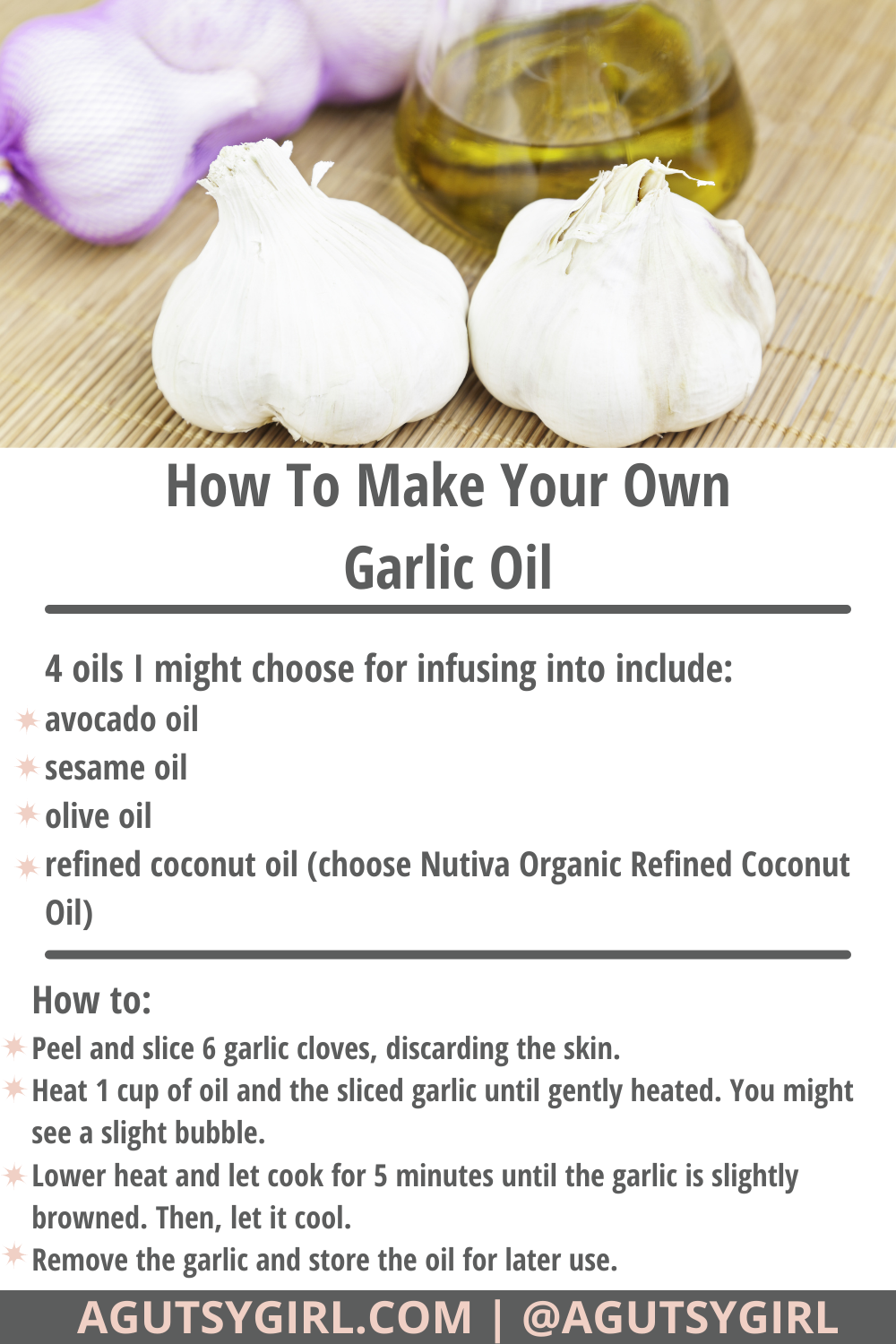
Garlic Substitutes
At this point you may be wondering if your food will ever taste as good without garlic or if you’ll have to sacrifice suffering for a flavorful meal. If you think garlic might be a problematic food, here are some other options to try when cooking:
- Oil – keeps the same flavor as fresh garlic, but without the FODMAPs; see above for how to make your own or seek one out
- Garlic Chives – another low FODMAP option with the same garlic flavor.
- Lemon Zest – not the exact flavor, but still a sharp and bitter taste.
- Finely chopped fennel – not the exact same flavor (obviously), but when minced and cooked it can resemble minced garlic.

….But is it too much for me?
So back to the question at hand, “Is x quantity too much for me?”
Here are some ways to know:
-
Eat garlic, take hydrogen breath test at home (using this device HERE), read results. Rinse and repeat for a few hours to get the most accurate reading.
-
Test different forms
See above for many options. Test, then record any following symptoms.
-
Try various amounts
I used to bake them whole and eat like they were going out of style. Back when I was sick with SIBO, I once tested how many I could get by with. At first, none. Then, somewhere between 1 -2 cloves.
Today? Well I haven’t exactly tested it, but I’m going to try again with at least 10. Kidding. Maybe. Anyways, use my food journal key, test, and record. If you don’t want the physical journal shipped directly to you, you can print the PDF HERE and get started today.
Also, it might just be too much for you if your breath stinks. Then again, a stinky breath could be indicative of general gut dysbiosis.
If you liked this post, then you might also enjoy:
Xox,
SKH
🤰 bloating be gone! weight loss through optimal gut health for women
💃ʜᴇᴀʟ ʏᴏᴜʀ ɢᴜᴛ. ʜᴇᴀʟ ʏᴏᴜʀ ʟɪfe.
🫶🏻 founder gutbyome.com

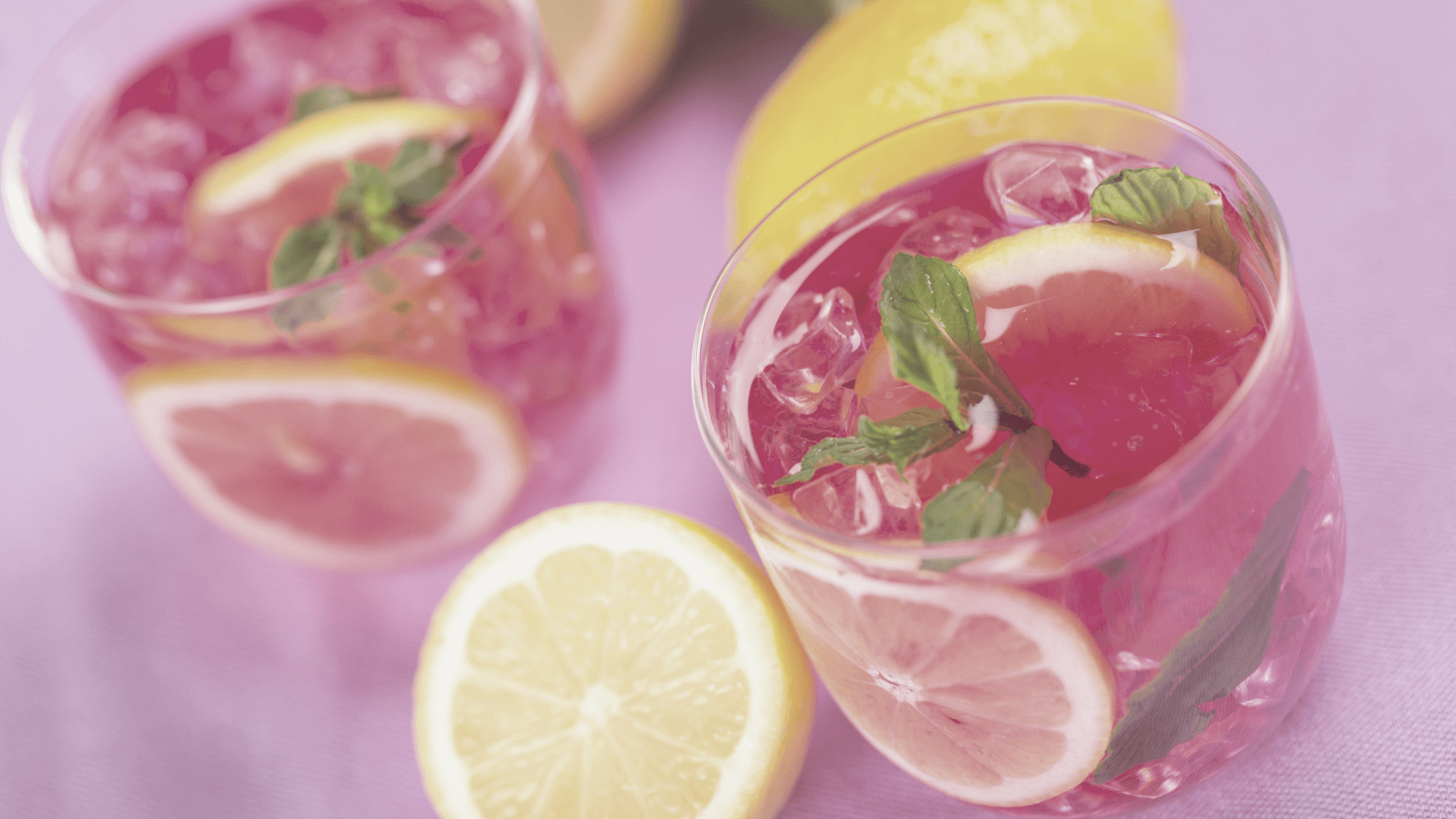

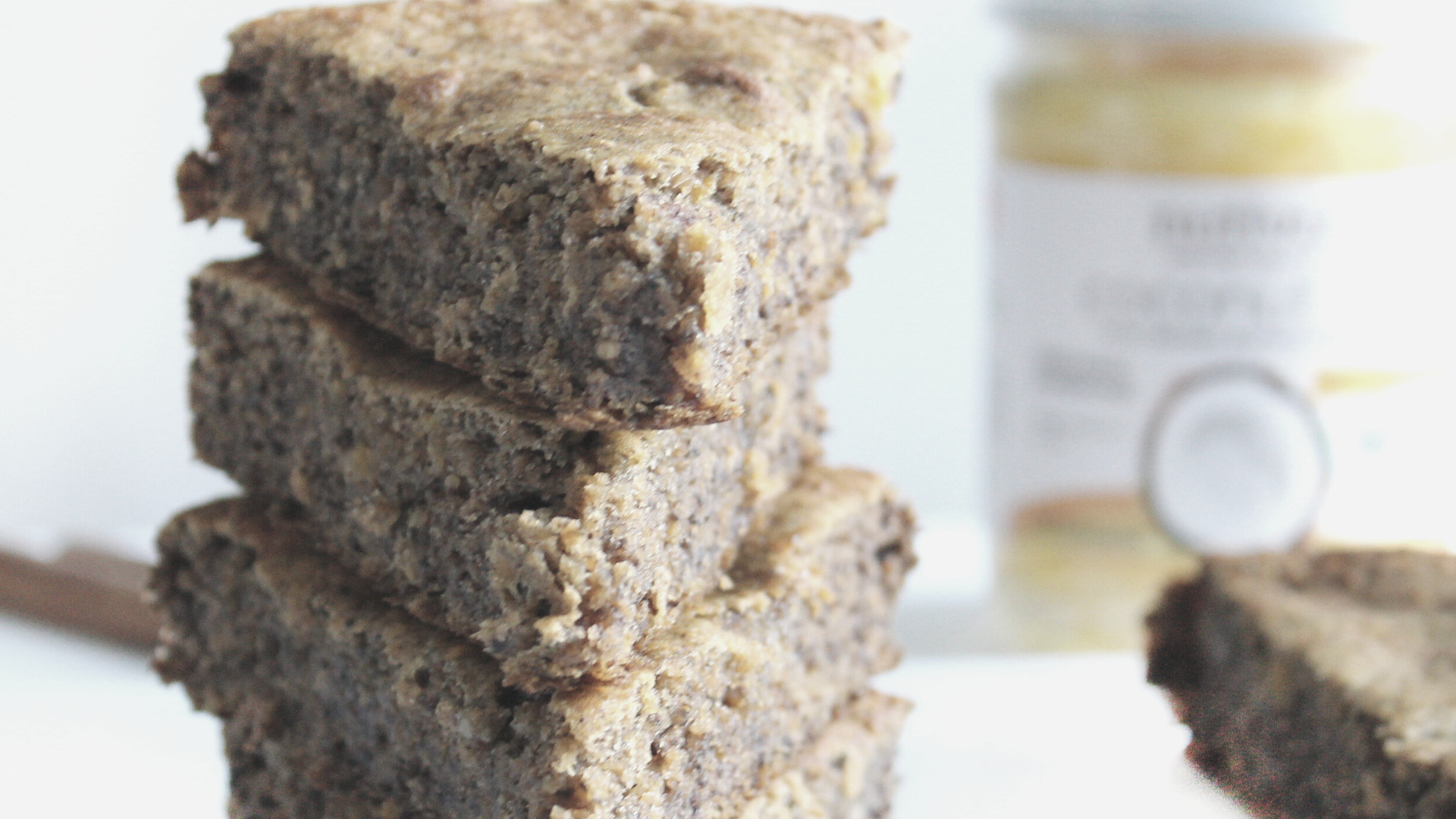

![Create Your Own FODMAP Diet Plan [Using These 310 Graphics]](https://agutsygirl.com/wp-content/uploads/2020/10/journal-sibo-writing-featured-agutsygirl.com_.png)
